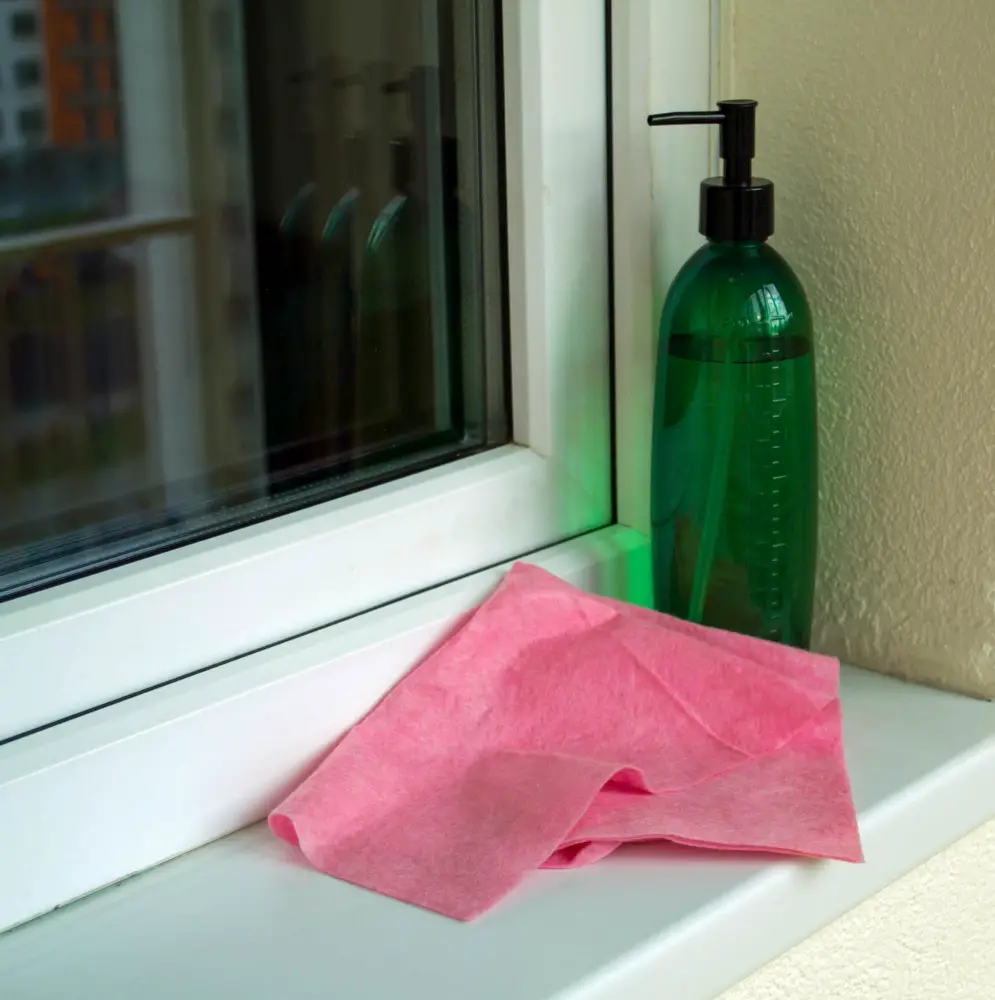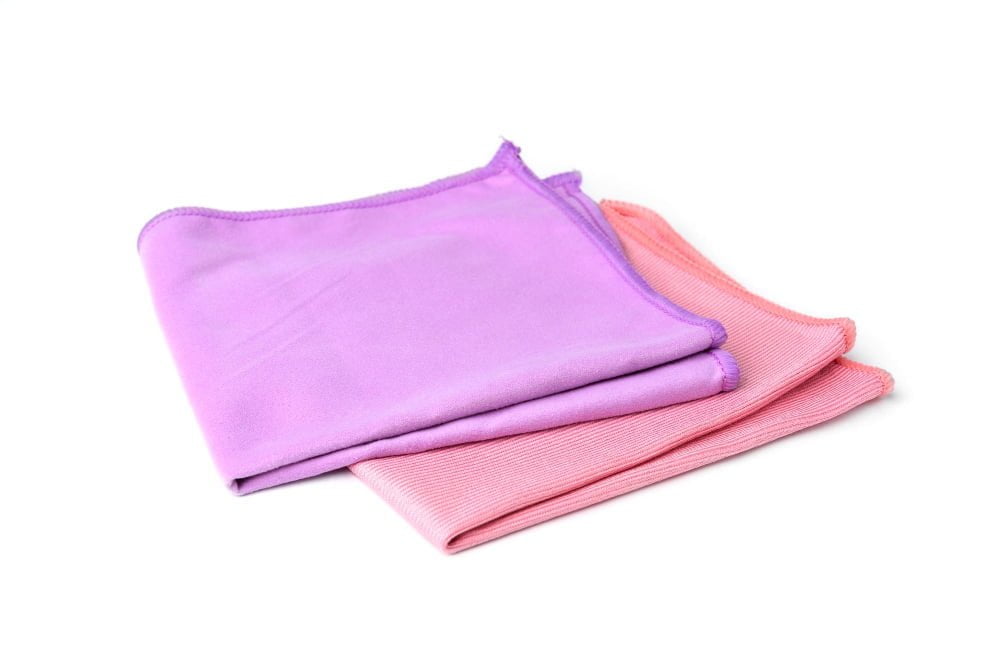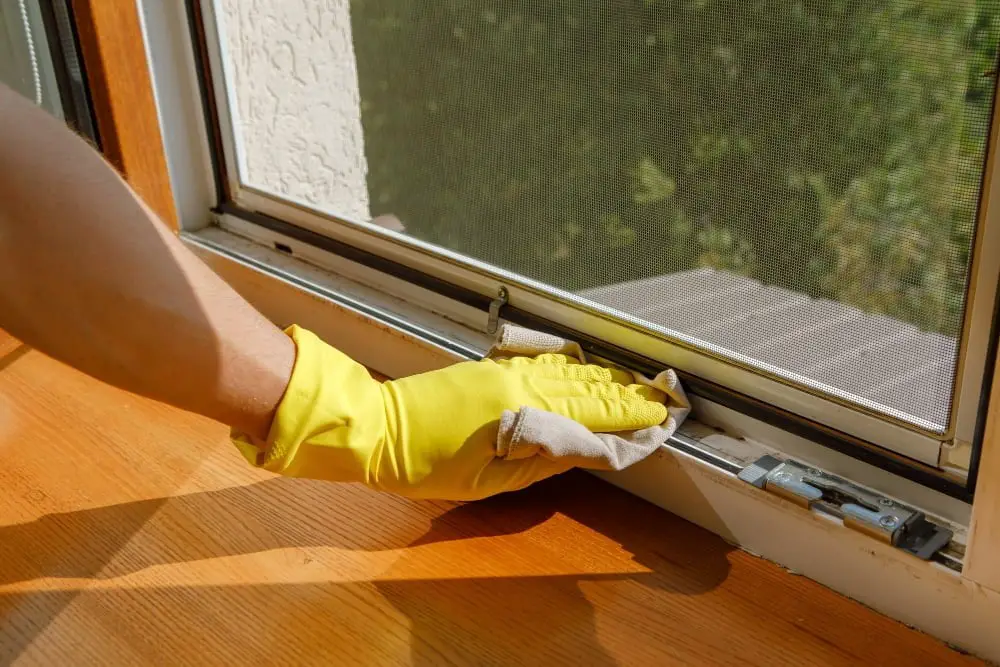Discover the simple steps to achieve spotless and dust-free window sills inside your home with our effective cleaning guide.
Cleaning window sills may seem like a mundane task, but it’s an essential part of maintaining your home’s cleanliness and hygiene. Dirt, dust, and grime can accumulate on the sills over time, making them look unsightly and potentially affecting the air quality in your home.
That’s why it’s crucial to know how to clean window sills inside effectively. In this blog post, we’ll share some expert tips on how to get rid of dirt and grime on your window sills without damaging them.
So grab your cleaning supplies and let’s get started!
Key takeaways:
- Gather cleaning materials: vacuum, cloths, bucket, soap, vinegar.
- Use microfiber cloths, brushes, vacuum, and cleaning solution spray.
- Use dish soap, vinegar, or store-bought cleaners for sills.
- Inspect window sills for damage and choose appropriate cleaning solution.
- Remove dust and dirt first, then vacuum the area.
Gather Cleaning Materials

This will save you time and ensure that you have everything on hand when needed. The good news is that most of these items are readily available in your home or local store.
To clean your window sills effectively, here are some of the things you’ll need:
- A vacuum cleaner with a brush attachment
- Microfiber cloths or rags
- A bucket filled with warm water
- Dish soap or any mild detergent
- White vinegar
- Baking soda (optional)
- Once you have gathered all these materials, it’s time to move on to the next step: choosing the right tools for cleaning your window sills.
Window Sill Cleaning Tools

Here are some essential cleaning tools that will make the job easier:
1. Microfiber cloths: These soft and absorbent cloths are perfect for wiping away dust and dirt from your window sills without leaving any scratches.
2. Soft-bristled brush: A soft-bristled brush is ideal for removing stubborn dirt or debris from hard-to-reach areas on your window sill.
3. Vacuum cleaner with attachments: Use a vacuum cleaner to remove loose dust and debris before you start scrubbing down the surface of your windowsill.
4. Sponge or scouring pad: For tougher stains, use a sponge or scouring pad to gently scrub away grime without damaging the surface of your windowsill.
5. Cleaning solution spray bottle: Fill up a spray bottle with an effective cleaning solution like oxygen bleach, vinegar-water mixture, or citrus-based cleaners to help break down tough stains on surfaces quickly.
Products to Clean Your Window Sills

Using the wrong product can damage your windows or leave behind streaks and residue. So what are the best products for cleaning window sills?
Firstly, dish soap is an excellent option for removing dirt and grime from your window sills. It’s gentle enough not to damage any surfaces but strong enough to remove stubborn stains.
Another great product is vinegar – a natural cleaner that works wonders on dirty surfaces like windowsills. Mix equal parts of water and white vinegar in a spray bottle, then spritz onto the surface before wiping with a microfiber cloth.
If you prefer store-bought cleaners, look for ones specifically designed for use on glass or hard surfaces such as all-purpose cleaners or multi-surface disinfectants.
Inspect Window Sills

Check for any cracks or damages that may require repairs. If you notice any signs of water damage or mold growth, take extra precautions and wear protective gear such as gloves and a mask when cleaning.
Inspecting your window sills will also help determine the type of cleaning solution to use. For instance, if there are stubborn stains on the sill surface, avoid using abrasive cleaners that can scratch or damage the material.
Inspecting your windowsill will give you an idea of how much dirt has accumulated over time and what tools are necessary for effective cleaning. By taking this step before starting with actual cleanup work ensures that no further harm is done while trying to clean up dust from damaged areas.
Remove Dust and Dirt

This is an essential step in the cleaning process as it will make scrubbing easier and prevent any scratches on your windowsill surface.
To remove dust and dirt, use a soft-bristled brush or a microfiber cloth to gently sweep away any loose debris. Be sure to get into all of the nooks and crannies of your window sill where dirt can accumulate.
If you notice that there are stubborn stains or grime on your window sill, don’t worry; we’ll cover how to deal with those later in this post. For now, focus on getting rid of as much loose debris as possible before moving onto the next steps.
Vacuum the Area

Use a handheld vacuum or an attachment on your regular vacuum cleaner to suck up any remaining debris. Be sure to get into all the nooks and crannies of the window sill, as well as around any hardware or other obstructions.
Vacuuming is especially important if you have pets in your home since their hair can accumulate quickly on window sills. It’s also essential for those who suffer from allergies since dust mites can thrive in these areas.
By taking this extra step, you’ll ensure that all loose particles are removed before moving onto cleaning with a solution. This will make it easier for you to achieve spotless results without having to scrub too hard or risk damaging delicate surfaces like wood or painted finishes.
Prepare the Cleaning Solution

You can use a commercial cleaner or make your own using natural ingredients. If you prefer an eco-friendly option, try mixing equal parts of water and white vinegar in a spray bottle.
For tougher stains or mold on window sills, mix one part hydrogen peroxide with two parts water in a spray bottle. This solution is effective at killing bacteria and removing stubborn stains.
Another alternative is to use oxygen bleach powder mixed with warm water according to package instructions. Oxygen bleach is safe for most surfaces and doesn’t contain harmful chemicals that could damage your window sills.
Whichever cleaning solution you choose, be sure to test it on an inconspicuous area first before applying it all over the surface of your window sill.
Citrus Power: Cleaning With Orange Essential Oil

This powerful oil has antibacterial properties that can help kill germs and bacteria on your window sills. Plus, it leaves behind a fresh citrus scent that will make your home smell amazing.
To use orange essential oil for cleaning, mix 10-15 drops of the oil with one cup of white vinegar in a spray bottle. Shake well before each use and spray the solution onto your window sills.
Let it sit for about five minutes before wiping away with a damp cloth.
Not only is this method effective at removing dirt and grime from your window sills, but it’s also safe to use around children and pets since there are no harsh chemicals involved.
Oxygen Bleach: The Effective & Safe Alternative

It’s an eco-friendly cleaning solution that can be used on various surfaces, including window sills. Unlike chlorine bleach, oxygen bleach doesn’t contain harmful chemicals that can damage the environment or your health.
To use oxygen bleach for cleaning your window sills, mix it with warm water according to the instructions on the package. Apply the solution onto your window sill using a sponge or cloth and let it sit for 10-15 minutes before scrubbing away any dirt or grime.
One of the benefits of using oxygen bleach is that it won’t discolor or damage surfaces like wood, vinyl, aluminum frames around windows as well as painted walls near them. You don’t have to worry about toxic fumes when using this type of cleaner since there are no harsh chemicals involved in its composition.
Scrub Window Sills

Scrubbing helps to remove any stubborn stains or grime that may have accumulated on the surface of your window sills. You can use a soft-bristled brush or an old toothbrush for this task.
Start by dipping the brush into your cleaning solution and gently scrubbing in circular motions over each section of the sill. Pay extra attention to corners and edges where dirt tends to accumulate more frequently.
If you’re dealing with tough stains like grease or oil, mix some baking soda with water until it forms a paste-like consistency. Apply this mixture onto the stain using a cloth or sponge, let it sit for 10-15 minutes before scrubbing away with your brush.
Remember not to apply too much pressure while scrubbing as this could damage delicate surfaces such as painted wood finishes on windowsills. After thoroughly cleaning all areas of each window sill, wipe down again using a damp cloth before drying off completely with another clean towel.
The Cut Sponge Window Sill Technique

All you need is a regular kitchen sponge and a pair of scissors. Cut the sponge into small pieces that fit perfectly into the corners and edges of your window sills.
This will allow you to reach those hard-to-reach areas where dirt, dust, and grime tend to accumulate.
Once you have cut the sponge pieces, dampen them with water or cleaning solution (depending on how dirty your windows are). Then use these small pieces of sponges to scrub away any dirt or stains from all parts of the sill.
This technique works wonders for removing stubborn stains in tight spaces without damaging delicate surfaces like wood or painted finishes. Plus, it’s an affordable alternative compared to buying expensive cleaning tools specifically designed for this task.
Deal With Tough Stains

In these cases, you’ll need to take some extra steps to deal with tough stains.
One effective method is using a mixture of baking soda and water. Mix equal parts of baking soda and water in a bowl until it forms a paste-like consistency.
Then apply the paste onto the stained area of your window sill using an old toothbrush or scrub brush.
Let it sit for 10-15 minutes before wiping away with a damp cloth or sponge. This should help remove any stubborn stains that have built up over time.
If this doesn’t work, you may want to try using white vinegar instead of water when making your baking soda paste as vinegar has natural cleaning properties that can help break down tough stains.
Mold On Window Sills

It’s not only unsightly but can also pose health risks, especially for people with allergies or respiratory problems. If you notice mold growing on your window sills, it’s essential to take immediate action to prevent it from spreading.
To remove mold from your window sills, start by wearing protective gloves and a mask to avoid inhaling spores. Then use a mixture of water and vinegar or hydrogen peroxide solution in equal parts as an effective natural cleaning agent against mold.
Apply the solution onto the affected area using a soft-bristled brush or sponge and let it sit for 10-15 minutes before scrubbing gently. Rinse with clean water afterward and dry thoroughly using paper towels or cloth.
If the mold growth is severe, consider hiring professional cleaners who have specialized equipment like HEPA vacuums that can effectively remove all traces of spores without causing further damage to your home’s structure.
Preventing moisture buildup in your home is key to avoiding future occurrences of mold growth on windowsills.
Wipe With Damp Cloth

This step is crucial in removing any remaining dirt or cleaning solution residue. Make sure the cloth you use is clean and damp, but not soaking wet as excess water can damage the wood or paint on your window sills.
Start wiping from one end of the sill to another, making sure you cover every inch of its surface area. If there are hard-to-reach areas such as corners or edges, use a cotton swab dipped in cleaning solution to get rid of any stubborn grime.
Once you’ve wiped down all surfaces thoroughly with a damp cloth and removed all traces of dirt and cleaning solution residue, take another dry microfiber towel and gently pat dry your window sills until they’re completely dry.
Dry Window Sills

Leaving any moisture on the surface can lead to mold growth or water damage over time. To dry your window sills, use a clean and absorbent cloth or paper towel.
Start at one end of the sill and work your way across until you’ve dried the entire surface.
If there are any hard-to-reach areas that are still damp after wiping with a cloth, use a hairdryer on low heat setting to blow-dry those spots.
Remember that proper ventilation is also crucial in drying out window sills quickly. Open windows and doors in the room where you cleaned so air can circulate freely.
Clean Window Screens

Cleaning them regularly will help improve the air quality in your home and keep pests out. To clean window screens, remove them from the windows and lay them flat on a clean surface such as a table or floor.
Use a soft-bristled brush to gently scrub both sides of the screen with warm soapy water or an all-purpose cleaner.
Rinse thoroughly with water until no soap suds remain, then let dry completely before reattaching to your windows. If you have stubborn stains on your window screens that won’t come off with soap and water alone, try using vinegar mixed with baking soda for extra cleaning power.
Cleaning window sills inside is not just about aesthetics; it’s also about maintaining good indoor air quality by removing accumulated dust particles that could cause respiratory problems if left unchecked.
Clean the Window Tracks

Over time, dirt, dust, and debris can accumulate in the tracks, making it difficult to open or close your windows properly. To clean the window tracks effectively:
1. Start by vacuuming out any loose dirt or debris from the track using a crevice tool attachment.
2. Next, use a stiff-bristled brush to scrub away any remaining grime or buildup.
3. For stubborn stains that won’t come off with brushing alone, you can use a cleaning solution made from equal parts water and white vinegar.
4. Dip an old toothbrush into this solution and scrub away at any tough spots until they’re gone.
5. Wipe down the entire track with a damp cloth to remove any remaining residue before drying thoroughly with another clean cloth.
Preventative Maintenance

One way to do this is by regularly dusting and wiping down the sills with a damp cloth. You can also use a microfiber cloth or an old t-shirt for this purpose.
Another preventative measure is sealing the window frames and sills with caulk or weatherstripping. This will help keep out dirt, dust, and moisture that can cause mold growth on your windowsill.
It’s also important to inspect your windows regularly for any signs of damage or wear and tear that could lead to leaks or drafts. If you notice any issues, be sure to address them promptly before they become more significant problems.
Safety Precautions

First and foremost, make sure that you have a stable ladder or step stool if the windows are high up. If possible, ask someone to hold the ladder for added stability.
Wear gloves and protective eyewear when handling cleaning solutions as they can be harsh on your skin and eyes. Also, ensure that there is proper ventilation in the room while using any chemical cleaners.
If you’re using a sponge or cloth to clean your window sills, avoid leaning too far out of the window as this could cause an accident. Instead of stretching yourself too much from one side of the sill to another side use a sturdy chair with back support.
By taking these simple safety measures before starting work on cleaning your window sills inside will help prevent accidents from happening so that you can focus solely on achieving spotless results!
FAQ
How do you clean the inside of a window ledge?
To clean the inside of a window ledge, use a soft scouring pad, water, dish liquid, and baking soda for stains; scrub lightly, using a toothbrush for window tracks, rinse with warm water, and let it drain or dry with a towel.
How do you clean dirt off window tracks?
To clean dirt off window tracks, dampen the baking soda with vinegar, use an old toothbrush to loosen dirt, and wipe the solution away with a microfiber cloth.
Can you use vinegar on window sills?
Yes, you can use a 50/50 mix of water and white vinegar on window sills as a gentle, natural cleaning agent to kill mold and clean the surface.
What is the best method for removing mold from window sills?
The best method for removing mold from window sills is to use a mixture of water and mild detergent, scrubbing the affected areas with a soft brush before rinsing and thoroughly drying.
Which cleaning products are safe for various window sill materials?
For various window sill materials, safe cleaning products include mild soap, water, and non-abrasive cloth for wooden sills; glass cleaner for glass sills; and a mixture of mild dish soap, water, and a soft-bristled brush for aluminum and vinyl sills.
How often should you clean window sills to maintain optimal hygiene?
To maintain optimal hygiene, window sills should be cleaned at least once a month.
Recap





